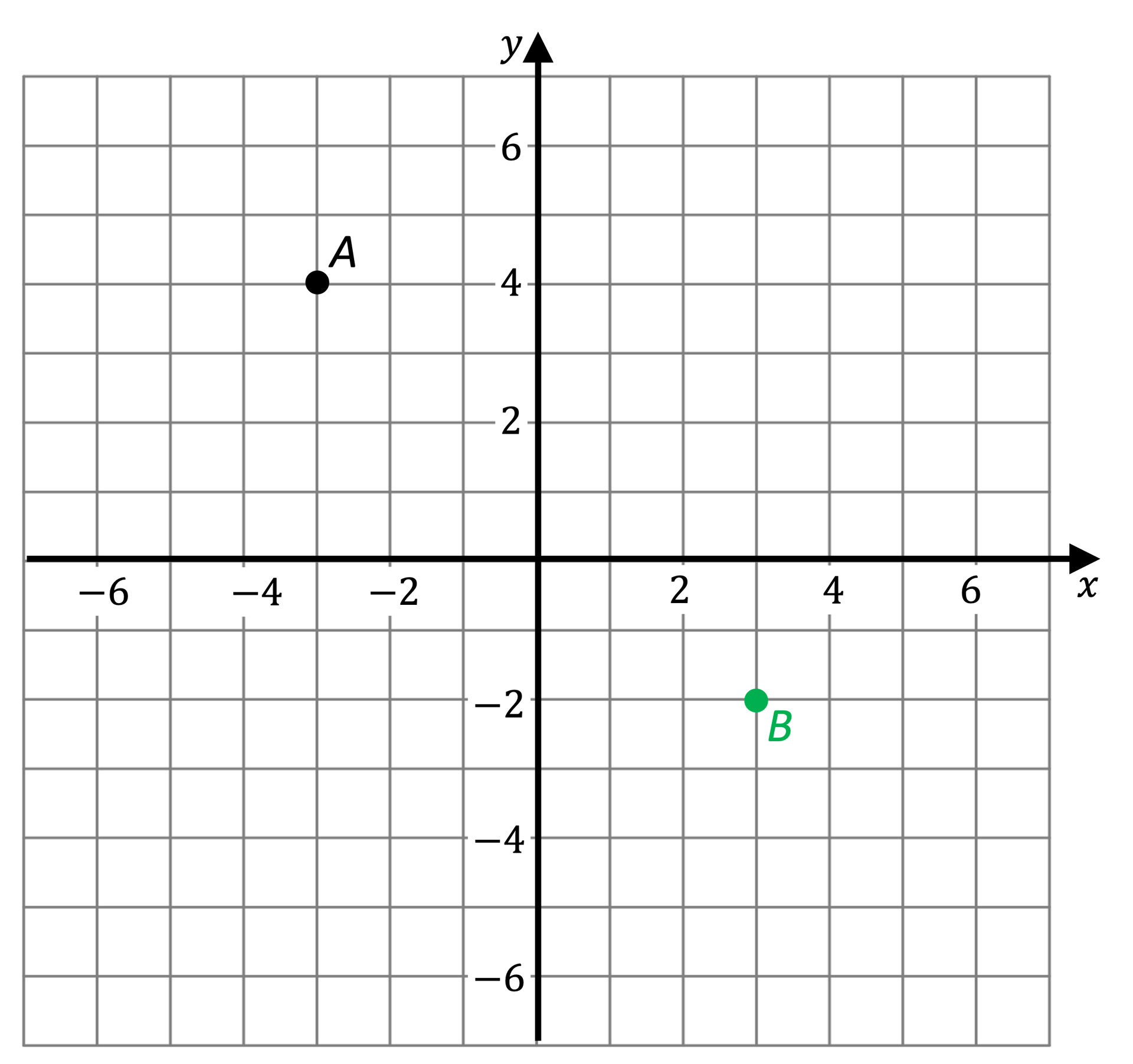2D Coordinates
What are 2D coordinates?
- A graph in two dimensions is also known as a Cartesian plane
- Normally the two dimensions are labelled x and y, where
- the horizontal axis is x and the vertical axis is y
- The two axes meet where x and y are both 0
- This point, (0, 0), is known as the origin
- The coordinate (x, y) tells us that the point is x units to the left/ right of the origin and y units below/ above the origin
-
- If the x value is negative then the point is to the left of the origin, and if the x value is positive then the point is to the right of the origin
- If the y value is negative then the point is below the origin, and if the y value is positive then the point is above the origin
Exam Tip
- "Along the corridor, up the stairs" is a useful way of remembering which way round (x, y) is
- Pay close attention to the scale shown on the axes
Worked example
(a)
Write down the coordinates of the point A shown on the axes below.
(b)
Mark the point B(3, -2) on the axes below.

(a)
A is 3 left of the origin so x = −3. And A is 4 above the origin so y = 4.
(−3, 4)
(b)
Starting at the origin, count 3 squares right and two squares down. Mark the point with a solid circle or a cross.


